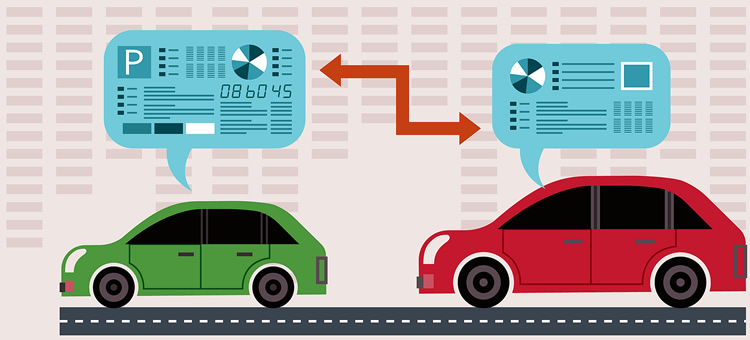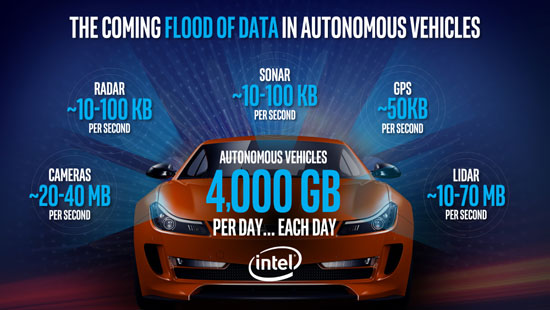
One of the anticipated use – case for 5G, which in fact presents a larger opportunity than the traditional consumer applications, has been for ultra-reliable and low latency application like Autonomous Cars. This vertical represent a new revenue stream and a brand differentiator for both the automobile and telecommunication industries. This has resulted in the integration of these industries as well as the formation of cross industry groups like the 5G Automotive Association (5GAA) etc.
In the automotive sector, 5G present opportunities for improved connectivity in connected cars, full control in autonomous cars, tele-operated remote driving for use in remote or harsh environments, vehicle platooning for trucks etc. Here, I will focus on autonomous cars only and discuss some of the benefits associated with this use case and highlight some of the issues that need to be addressed before successful deployment.
I would like to mention first that automation could vary from 0 (manual automation) through partial/conditional automation up to 5, in full automation.
Register for Tekedia Mini-MBA edition 19 (Feb 9 – May 2, 2026): big discounts for early bird.
Tekedia AI in Business Masterclass opens registrations.
Join Tekedia Capital Syndicate and co-invest in great global startups.
Register for Tekedia AI Lab: From Technical Design to Deployment (begins Nov 15th).

Now, some of the proposed benefits of Autonomous cars for consumers include the reduction of commute time, accident, traffic congestion, emissions etc. It is also anticipated that commuters can concentrate on other tasks rather than driving. Cars can also be made to perform other tasks e.g. order groceries rather than parking them in a garage. This would also present car sharing business models and could reduce the income spent on cars.
Some of the key issues to be addressed include high connectivity for these cars as well as their ability to interact with other cars and the environment. The use of edge computing solutions as well as C-V2X technology is anticipated here. C-V2X will allow for in the first instance, direct communication between vehicles, vehicles-infrastructures, vehicles-users and in the second instance, network communication using mobile network. For telcos seeking revenue from this vertical, several business models have been proposed such as the Connectivity model which involves payment for the provision of low-latency, high connectivity etc. to vehicle companies, the platform model which involves working with a third party (e.g. automaker) to develop a platform and then taking a share of the platform services and the Infrastructure model, which could involve selling slices of MNO controlled network.
As highlighted in one of my pieces on 5G, the communication industry is seeing a shift from hardware to software. This presents opportunities for cyber-security vulnerabilities. And unlike hardware for cars, it’s very hard to secure very line of code.
Also, User acceptance and Public Trust need to be strong and positive for successful deployment of Autonomous Cars. A good example is the case of Uber self-driving car which killed a pedestrian in self-driving mode. This incident has no doubt negatively affected the public’s perception of the safety of autonomous cars.
Besides, transparency concerns are also critical to understand the decision making process of the autonomous system. For example, in the case of an accident, accident investigators should be able to understand the logic behind the decision made by the autonomous system. In this same scenario, law suits become inevitable and it’s important for the legal mind to gather evidences as to the state of the autonomous system before such incidents.
As technologies should be developed to serve humans, ethical concerns need to be addressed. For instance, should self-driving cars be held to a higher standard than humans? Who should be held accountable when an accident occurs between a self-driving car and an individual? Should the user or the car manufacturer be held responsible for the accident?
Furthermore, Regulations and laws also need to keep in pace with the development of these technologies. For example, previous road regulations were based on cars being driven by humans; with the advent of self-driving cars, criminal offences and charges will no doubt change.
There is also the issue of social implication of the development of autonomous cars. It is anticipated that some self-driving trucks could replace professional truck drivers; in the US, this would lead to the job loss of around 3.5 million truck drivers. To address this, taxes have been mentioned as a way of addressing this issue.
In order to address these issues and more, a multi-disciplinary approach need to be adopted and would involve collaborative effort among Government, Industry, Academia, Civil Society Organisation etc. ‘A scientist/technologist build it all’ approach would not work; as highlighted in this piece, there are security, social, ethical and regulatory implications associated with the development and deployment of this technology.



